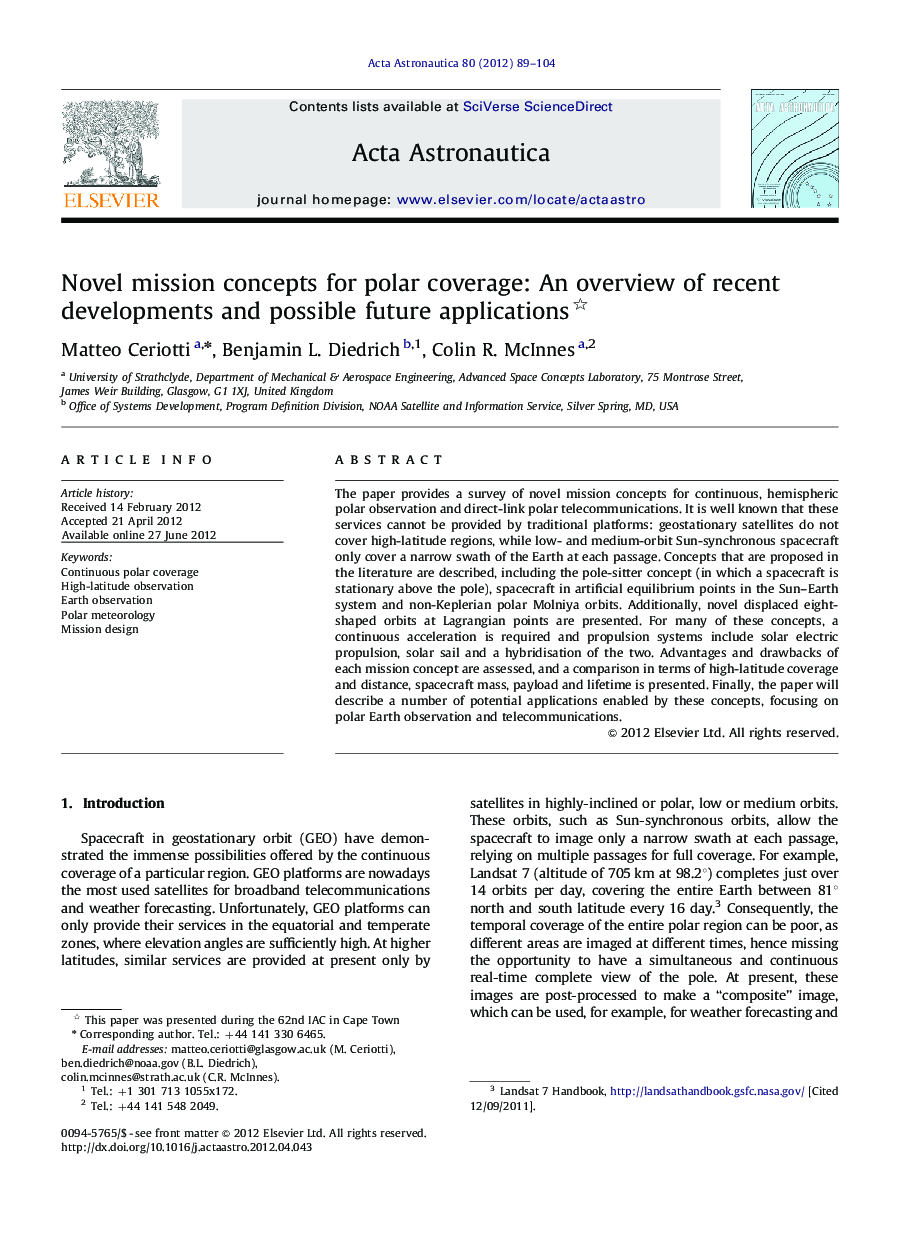| Article ID | Journal | Published Year | Pages | File Type |
|---|---|---|---|---|
| 1715251 | Acta Astronautica | 2012 | 16 Pages |
The paper provides a survey of novel mission concepts for continuous, hemispheric polar observation and direct-link polar telecommunications. It is well known that these services cannot be provided by traditional platforms: geostationary satellites do not cover high-latitude regions, while low- and medium-orbit Sun-synchronous spacecraft only cover a narrow swath of the Earth at each passage. Concepts that are proposed in the literature are described, including the pole-sitter concept (in which a spacecraft is stationary above the pole), spacecraft in artificial equilibrium points in the Sun–Earth system and non-Keplerian polar Molniya orbits. Additionally, novel displaced eight-shaped orbits at Lagrangian points are presented. For many of these concepts, a continuous acceleration is required and propulsion systems include solar electric propulsion, solar sail and a hybridisation of the two. Advantages and drawbacks of each mission concept are assessed, and a comparison in terms of high-latitude coverage and distance, spacecraft mass, payload and lifetime is presented. Finally, the paper will describe a number of potential applications enabled by these concepts, focusing on polar Earth observation and telecommunications.
► Currently polar coverage from space is performed from polar orbits or HEO. ► A continuous hemispheric view of the poles is not available with current technology. ► Alternative mission concepts (pole-sitters, displaced orbits and equilibria) are discussed. ► Novel propulsion systems are employed: SEP, solar sailing, hybrid. ► Key applications are presented focusing on Earth observation and telecommunications.
